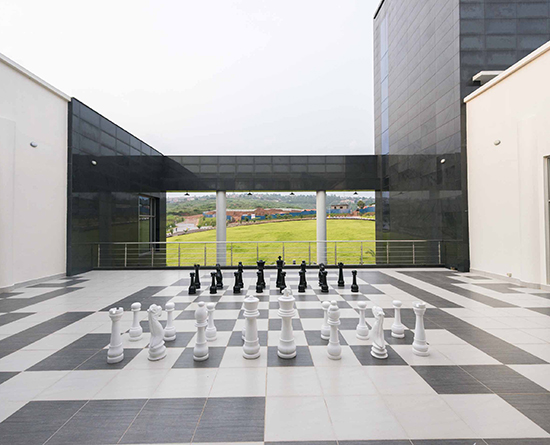CMU-Africa to resume in person classes under a hybrid model
Staff writer
Sep 28, 2020

Source: CMU-Africa
On September 26, 2020, after months of school closures and remote learning due to the COVID-19 pandemic, the Government of Rwanda announced a gradual reopening of schools beginning in October 2020. In light of this, CMU-Africa will be transitioning to hybrid model of instruction starting October 19—a combination of on-site and remote learning that will see faculty, staff, and students return to the CMU-Africa location in Kigali Innovation City.
CMU-Africa began its fall semester in August with fully remote learning, while continuing to make plans for the full academic year. As we prepare for the shift to a hybrid model this month, we asked some of our faculty, staff, and students to share their experiences with remote instruction:
In terms of staff, the main challenge was not being able to deal with student issues and inquiries face-to-face. According to Student Services Officer, Olga Gikunduro Buki, despite the uncertainty, the focus was on supporting students through the transition, “Our goal was to continue to provide the highest quality student experience to a student body that had migrated to remote learning. Activities were created to enable students to meet online just as they would ordinarily do in the cafeteria if we were on campus. In addition, student club activities continued virtually and the full orientation program took place online.”
For CMU-Africa faculty, the shift to remote instruction meant that the traditional classroom setting switched to a combination of video lectures and interactive sessions. According to Cathy Bishop, a full-time instructor who has been teaching computer science and software engineering courses at CMU-Africa since 2013, “Remote courses are in two parts, one that is highly structured for the content and assignments and another that is open-ended and allows for discussion and learning through activities.” As with any adjustment, there have been challenges involved. Creating video lectures is time-consuming for faculty and requires extra organizational effort, but the adjustment was made and faculty grew accustomed to delivering virtual lectures and to interacting with students online.
The student body transitioned with the help of software and platforms provided by CMU-Africa and with communication tools and spaces that allow for constant connection and support. After experiencing the shift to remote learning at the end of their first year, our second-year students—some of whom participated in successful remote corporate internships this summer—are adjusting to life off-campus, developing new daily routines, and finding ways to continue to connect with their peers.
The incoming class of 2022 began their CMU-Africa journey with our first remote orientation program and are now participating fully in classes and assignments. For the most part, students handled the transition to remote learning well, developing routines at home to help them balance home life and school life. According to first-year student Stewart Tatenda Maposa Mangezi, “studying without having met people in person, beforehand, is challenging. I don’t have that face-to-face connection with my professors, TAs or fellow students and virtual connections tend to work better with people you’ve met in person.” Stewart does, however, welcome the flexibility that came with remote learning, particularly the recorded lectures which allowed for more thorough recapping of material shared by the faculty. Second-year student Vinny Adjibi also appreciated the flexibility of this new way of learning, despite missing his colleagues and missing being on campus and participating in extra-curricular activities.
The entire CMU-Africa community is excited to transition to the new hybrid model of instruction and learning. While certain aspects of life on campus may be different, our mission remains the same—to deliver CMU’s transformative education.